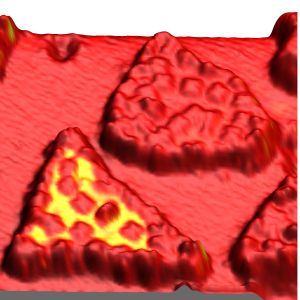Further development in contemporary information technology requires computing capacity with increased efficiency at reasonable costs. In the past, the miniaturization of the corresponding electronic components and the increase of their density in the device increased regularly. If this trend continues, then the future components will have to reach the size of individual molecules. Researchers from KIT University in Germany have advanced another step towards achieving this goal.

For the first time ever, a team of researchers from KIT University in Germany succeeded in combining the ideas of spin-based electronics and molecular electronics in a single component consisting of a single molecule. Components based on this idea have a special potential, since they enable the production of extremely efficient and tiny magnetic field sensors used to read information on hard drives or for permanent memories in order to increase reading speed and data capacity density.
The use of organic molecules as electronic components is being examined feverishly in our time. The minimization method gives rise to the problem where the information is coded with the help of the electric charge of the electrons (there is/is no electric current). However, this method requires the supply of a relatively large amount of energy. In spin-based electronic components, the information is encoded with the help of the self-rotation of the electron - a property known as spin. The advantage of this method lies in the fact that the spin remains as it is even when the electric current supply is disconnected, that is - the component is able to store information without any additional energy consumption.
The research team has now managed to combine these two scientific ideas. The organic compound (H2-phthalocyanin), which is also used as a blue colorant found in ballpoint pens, exhibits a high dependence of its resistance if it is trapped between magnetic electrodes, i.e. spin-polarized materials. This phenomenon was observed for the first time in pure metal connections by researchers Albert Fert and Peter Grünberg and is referred to as giant magnetoresistance, a change in the electrical resistance of a material subject to the influence of a magnetic field, Wikipedia) who won the Nobel Prize in Physics for 2007. The research findings were published in the scientific journal Nature Nanotechnology.
